Abstract
In our first 200 cases of primary hyperparathyroidism confirmed by operation 12 were also shown to have a long history either of a malabsorption syndrome or of chronic renal-glomerular failure. We consider that they first went through a phase of secondary hyperparathyroidism, during which one or more of the glands became autonomous adenamata. This then produced the biochemical changes of “primary” hyperparathyroidism, necessitating excision of the adenoma. This condition is best described as “tertiary” hyperparathyroidism. The transition from secondary to tertiary hyperparathyroidism occurred in four of the 12 patients while under our observation. We think the same process can be traced retrospectively in the other eight cases. The concept of tertiary hyperparathyroidism may help to explain the high incidence of other diseases in association with primary hyperparathyroidism.
The behaviour of the parathyroid glands provides a valuable model for the investigation of tumour formation in man. All states occurred in our patients with primary hyperparathyroidism, from normal through hyperplasia to adenoma formation and finally to parathyroid carcinoma.
Full text
PDF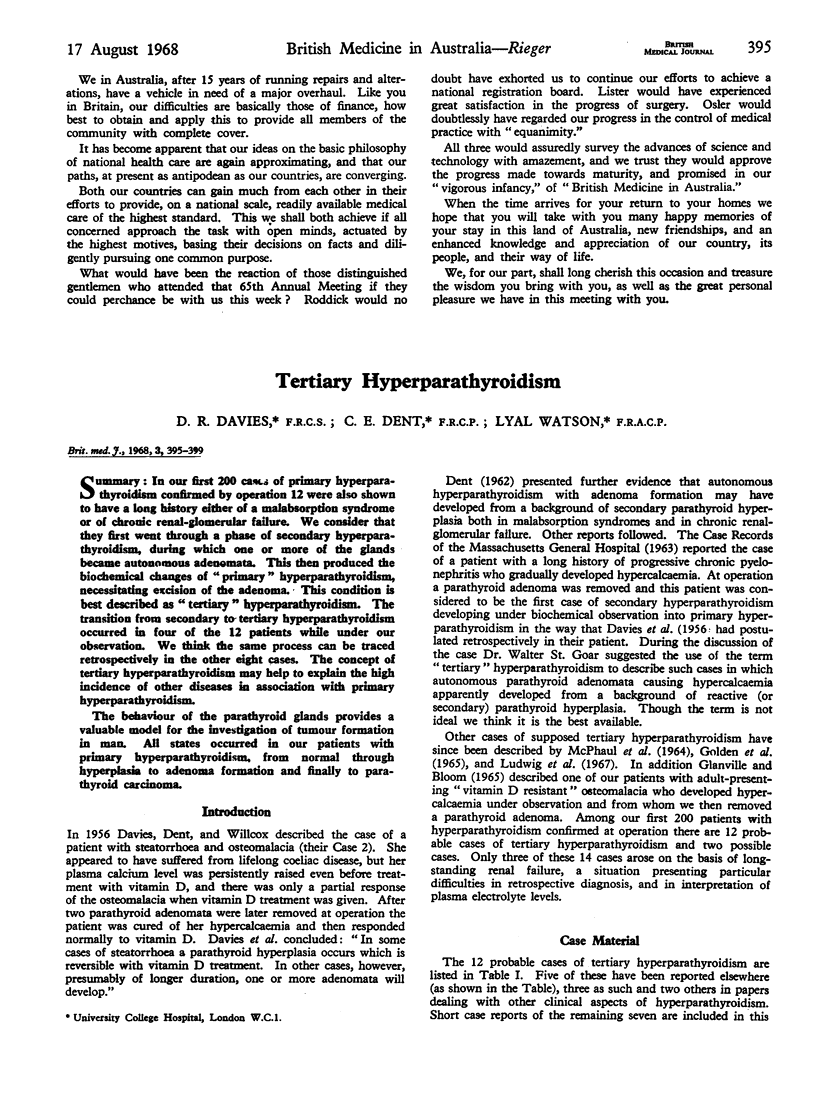
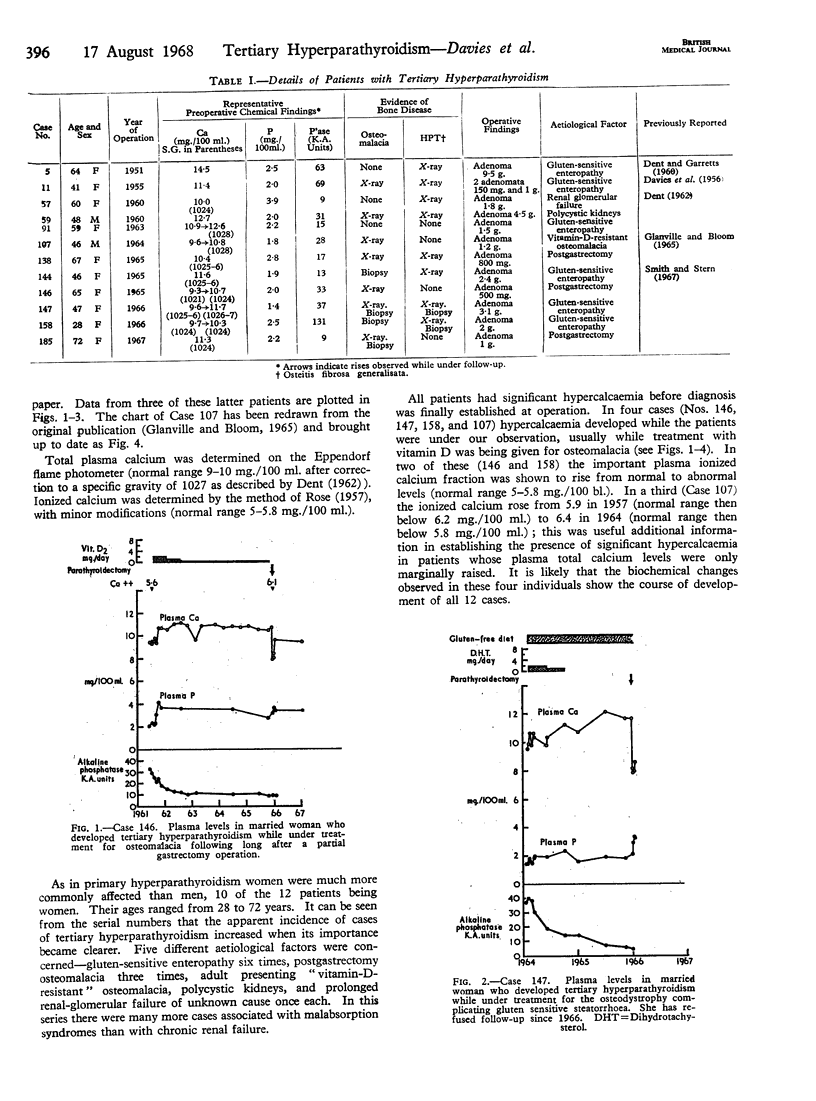
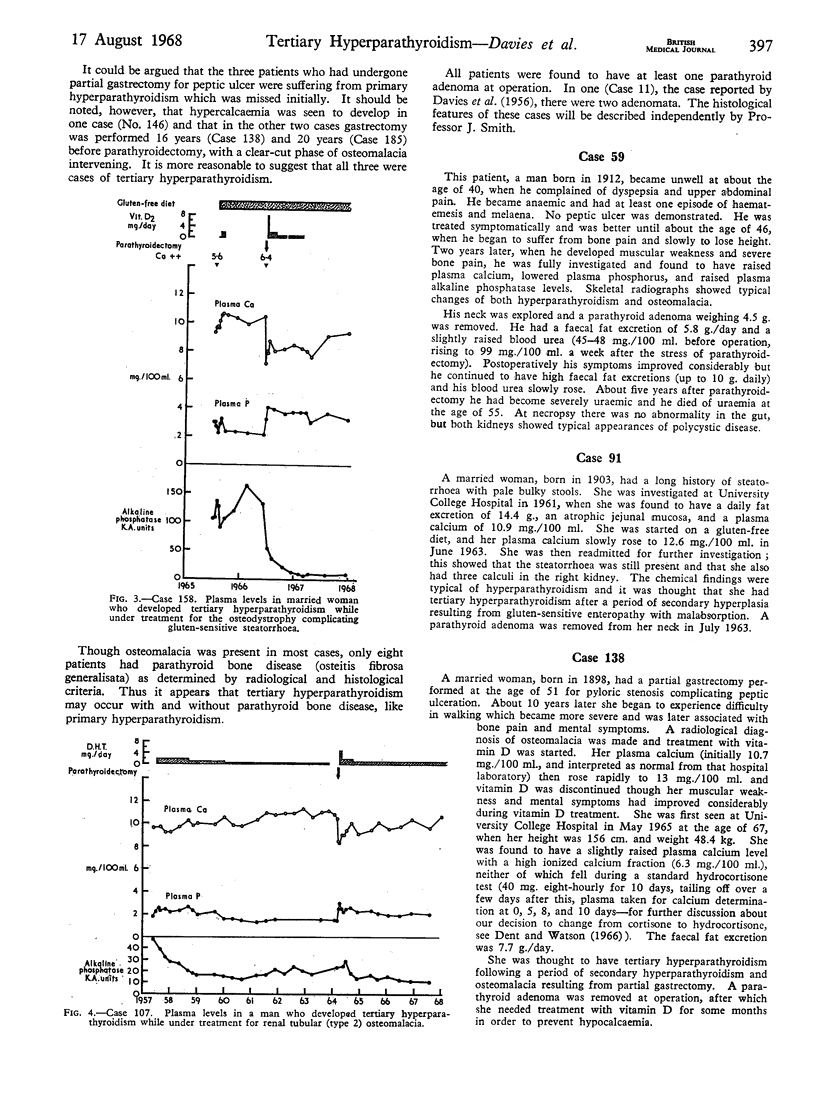
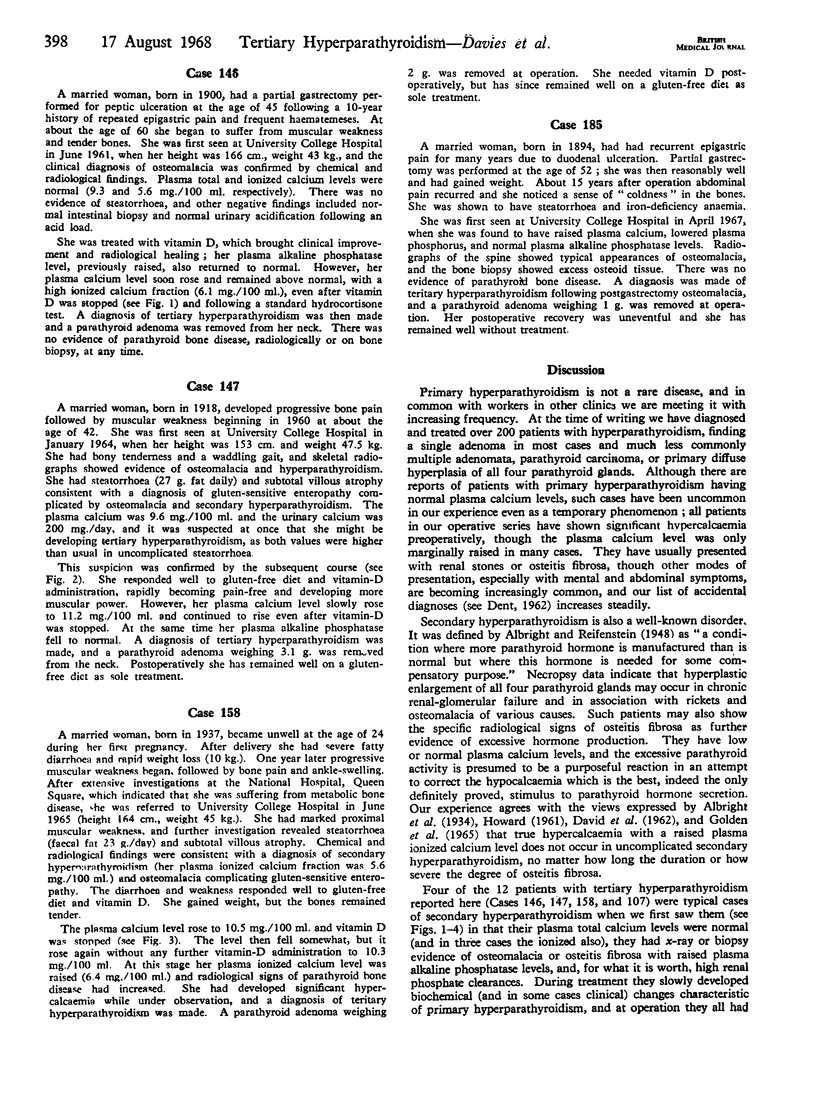
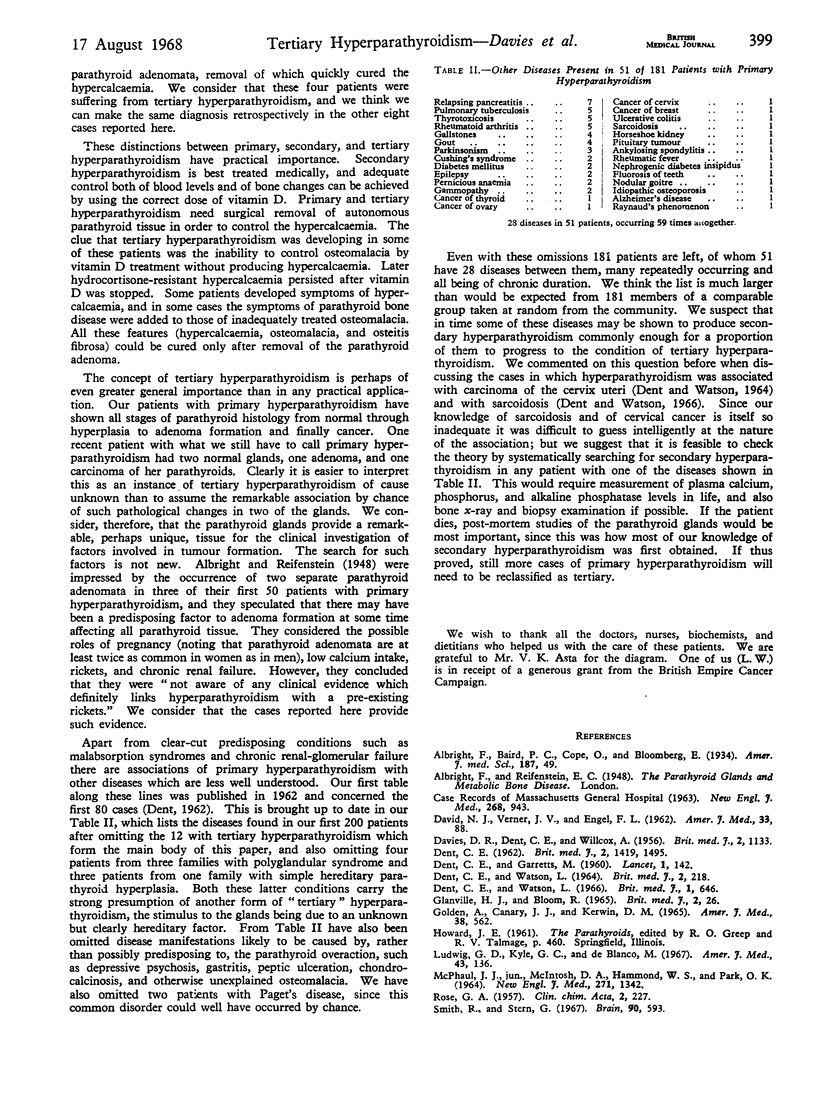
Selected References
These references are in PubMed. This may not be the complete list of references from this article.
- DAVID N. J., VERNER J. V., ENGEL F. L. The diagnostic spectrum of hypercalcemia. Case reports and discussion. Am J Med. 1962 Jul;33:88–110. doi: 10.1016/0002-9343(62)90280-2. [DOI] [PubMed] [Google Scholar]
- DAVIES D. R., DENT C. E., WILLCOX A. Hyperparathyroidism and steatorrhoea. Br Med J. 1956 Nov 17;2(5002):1133–1137. doi: 10.1136/bmj.2.5002.1133. [DOI] [PMC free article] [PubMed] [Google Scholar]
- DENT C. E., GARRETTS M. Skin changes in hypocalcaemia. Lancet. 1960 Jan 16;1(7116):142–146. doi: 10.1016/s0140-6736(60)90058-1. [DOI] [PubMed] [Google Scholar]
- DENT C. E., WATSON L. C. HYPERPARATHYROIDISM AND CANCER. Br Med J. 1964 Jul 25;2(5403):218–221. doi: 10.1136/bmj.2.5403.214-a. [DOI] [PMC free article] [PubMed] [Google Scholar]
- Dent C. E., Watson L. Hyperparathyroidism and sarcoidosis. Br Med J. 1966 Mar 12;1(5488):646–649. doi: 10.1136/bmj.1.5488.644. [DOI] [PMC free article] [PubMed] [Google Scholar]
- GLANVILLE H. J., BLOOM R. CASE OF RENAL TUBULAR OSTEOMALACIA (DENT TYPE 2) WITH LATER DEVELOPMENT OF AUTONOMOUS PARATHYROID TUMOURS. Br Med J. 1965 Jul 3;2(5452):26–29. [PMC free article] [PubMed] [Google Scholar]
- GOLDEN A., CANARY J. J., KERWIN D. M. CONCURRENCE OF HYPERPLASIA AND NEOPLASIA OF THE PARATHYROID GLANDS. Am J Med. 1965 Apr;38:562–578. doi: 10.1016/0002-9343(65)90134-8. [DOI] [PubMed] [Google Scholar]
- Ludwig G. D., Kyle C. G., de Blanco M. "Tertiary" hyperparathyroidism induced by osteomalacia resulting from phosphorus depletion. Am J Med. 1967 Jul;43(1):136–140. doi: 10.1016/0002-9343(67)90155-6. [DOI] [PubMed] [Google Scholar]
- MCPHAUL J. J., Jr, MCINTOSH D. A., HAMMOND W. S., PARK O. K. AUTONOMOUS SECONDARY (RENAL) PARATHYROID HYPERPLASIA. N Engl J Med. 1964 Dec 24;271:1342–1345. doi: 10.1056/NEJM196412242712604. [DOI] [PubMed] [Google Scholar]
- ROSE G. A. Determination of the ionised and ultrafilterable calcium of normal human plasma. Clin Chim Acta. 1957 Jun;2(3):227–236. doi: 10.1016/0009-8981(57)90107-9. [DOI] [PubMed] [Google Scholar]
- Smith R., Stern G. Myopathy, osteomalacia and hyperparathyroidism. Brain. 1967 Sep;90(3):593–602. doi: 10.1093/brain/90.3.593. [DOI] [PubMed] [Google Scholar]


